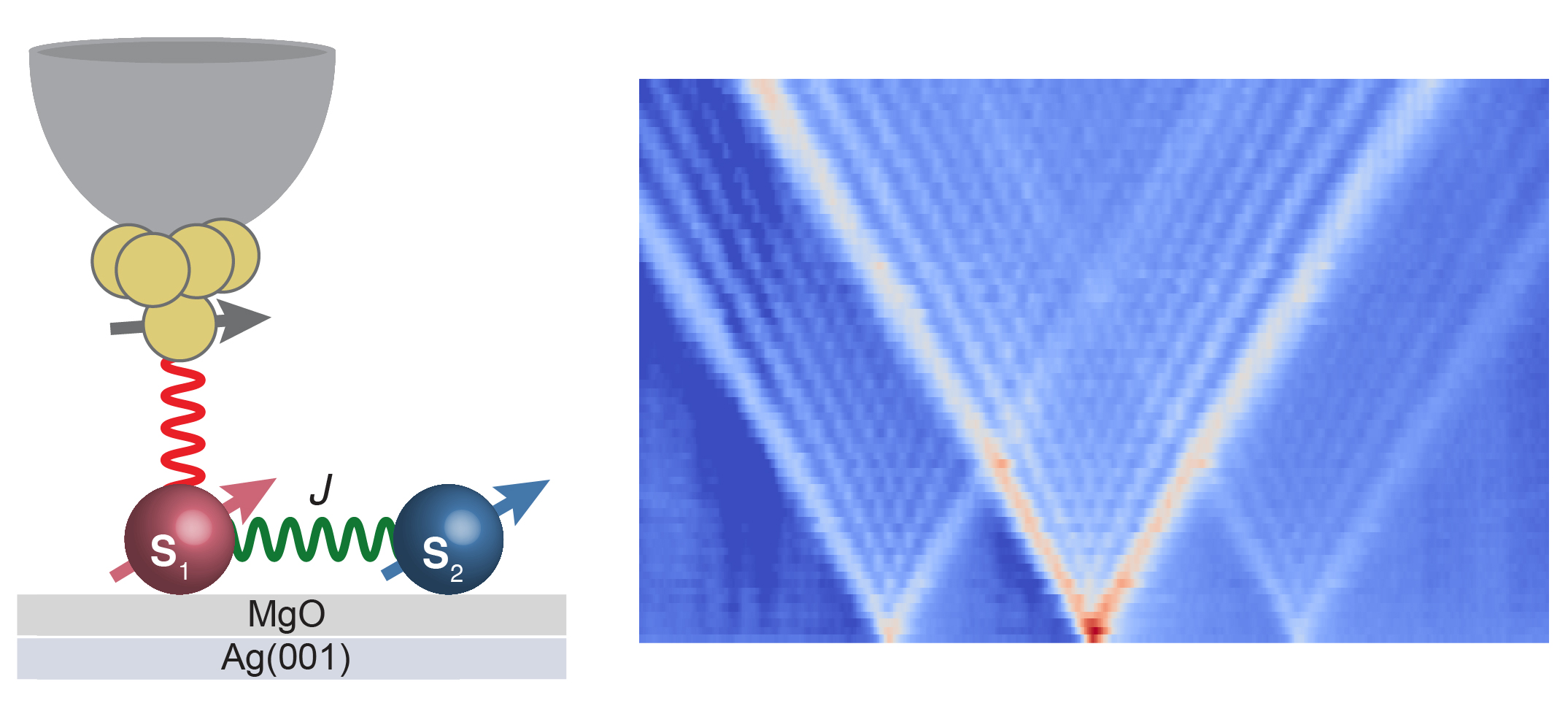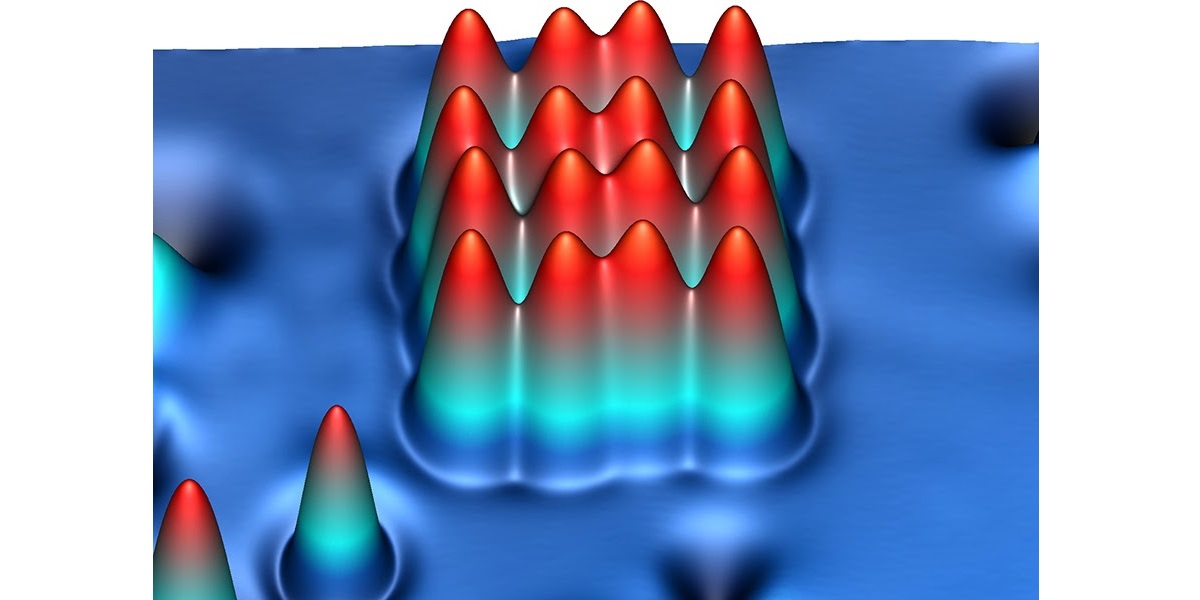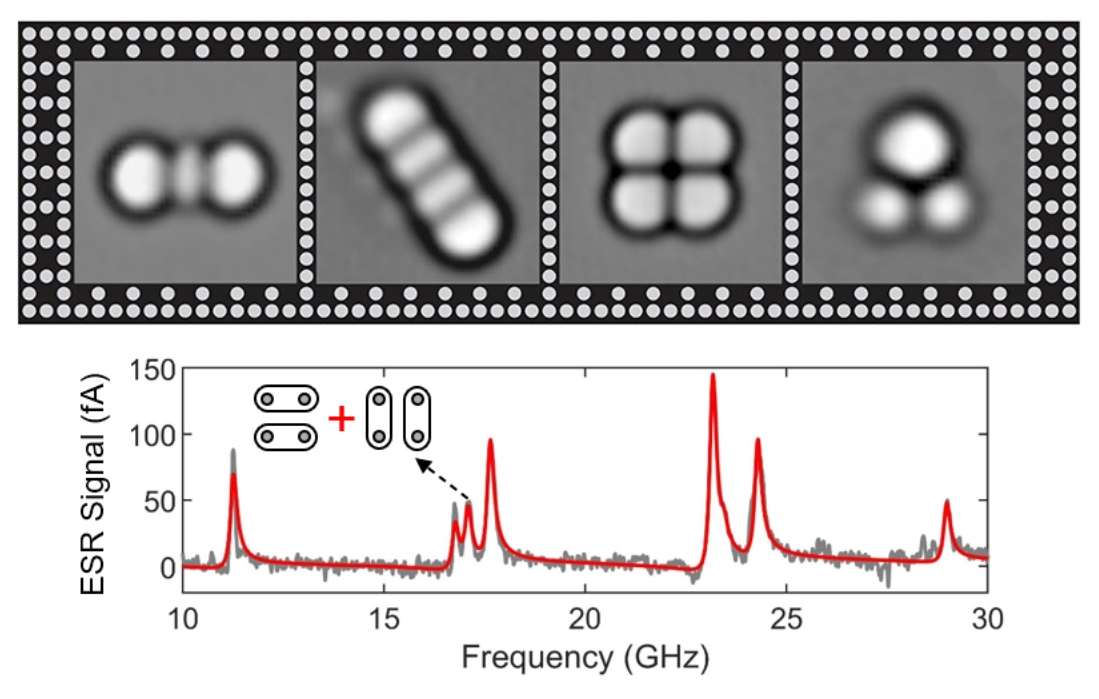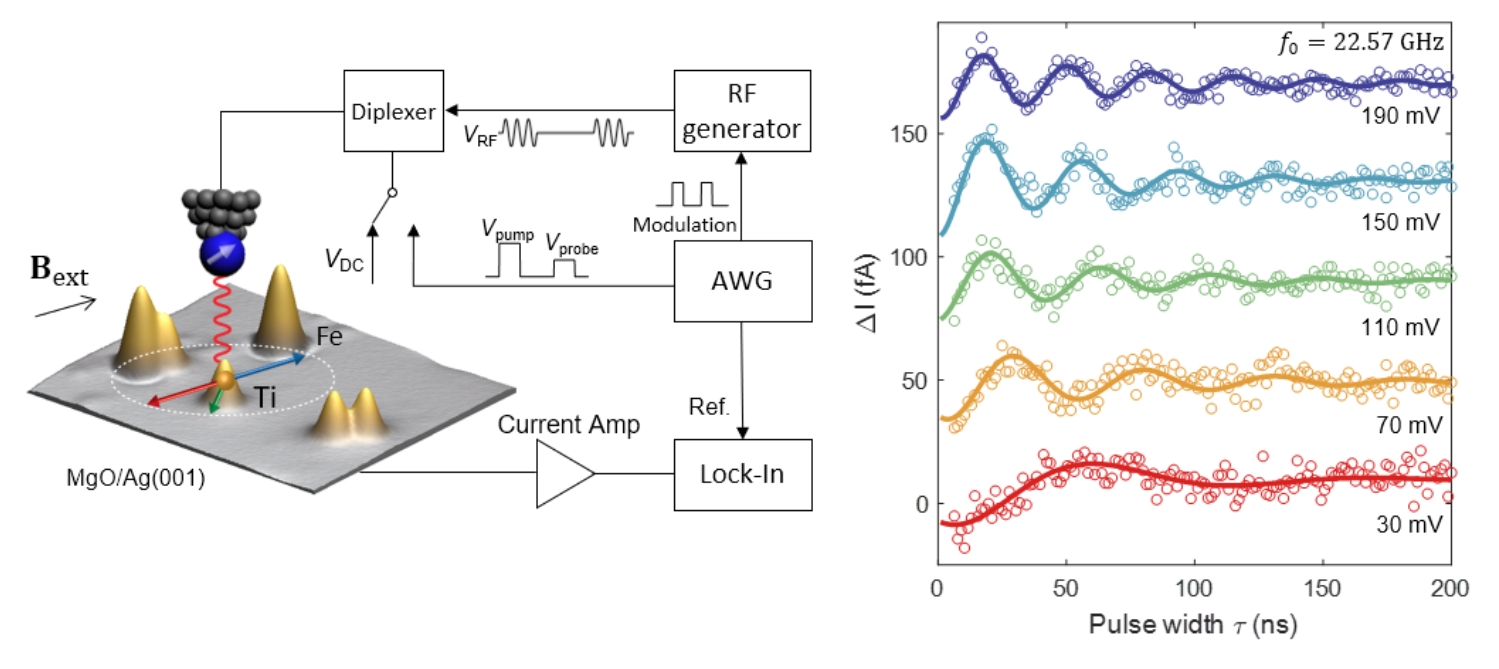Scanning Tunneling Microscopy of Quantum Magnets and Quantum Materials
Institute of Physics, CAS
Our research focuses on characterizing and manipulating quantum materials at the atomic scale, using a versatile quantum sensing tool combining two imaging methods: electron spin resonance (ESR) and scanning tunneling microscopy (STM). The ESR-STM provides a unique access to the quantum materials with energy resolution beyond the thermal limit and with atomic-scale spatial resolution. Our goal is to harness these quantum properties for quantum sensing and quantum information processing.
Electron Spin Resonance with Scanning Tunneling Microscope
Performing electron spin resonance (ESR) spectroscopy in STM has two outstanding advantages over the conventional STM spectroscopy. First, the energy resolution of the ESR-STM technique is ~1,000 times better than that of the conventional STM spectroscopy (for example, inelastic electron tunneling spectroscopy) which is intrinsically thermally limited. Second, the ESR-STM gives access to the phase information of the quantum states and allows the coherent control of the quantum states by generating quantum superpositions and entanglement with exquisite precision.
The ability to drive ESR of individual atoms using STM provided a major step forward in sensing and manipulating magnetism at the atomic scale. The atomic-scale spatial resolution and the ultrahigh energy resolution of ESR-STM has allowed the measurement of the magnetic dipolar interaction between two atoms placed a few nanometers apart on a surface, the detection of hyperfine interaction between electronic and nuclear spins of individual atoms, as well as the exploration of quantum fluctuations in designed spin arrays having tailored geometries. By implementing pulsed ESR, coherent spin manipulation of magnetic atoms and engineered atomic dimers on surfaces have been achieved by demonstrating Rabi oscillations, Ramsey fringes and spin echoes, opening the door to a powerful suite of pulsed techniques that can extend single-atom sensing capabilities. Coherent control of spins arranged with atomic precision provides a solid-state platform for quantum simulation of many-body systems.
References
[1] S. Baumann et al. Science 350, 417 (2015)
[2] F. Natterer et al. Nature 543, 226 (2017)
[3] K. Yang et al. Nat. Commun. 12, 993 (2021)
[4] K. Yang et al. Science 366, 509 (2019)
研究方向简介
1. 基于固体表面自旋的量子模拟:我们利用固体表面的磁性原子作为基本单元,通过自下而上的方法设计和构筑人工自旋晶格,模拟复杂的量子多体系统。这项研究可以帮助我们探索新型量子材料,并为量子计算和量子信息处理提供新的思路。
2. 基于单原子/分子量子探针的量子探测:我们将单个原子或分子作为量子探针,在原子尺度上探测其他量子材料的磁性。这项技术可以帮助我们更好地理解材料的微观磁性行为,为未来的量子计算和存储技术提供基础支持。
研究工具:电子自旋共振扫描隧道显微镜
电子自旋共振技术是最常用的研究电子自旋的实验技术之一。但是,传统的电子自旋共振测量需要数量巨大的电子自旋(~107以上)才能得到较高的信噪比。这就意味着其空间分辨率较低,无法直接应用到单个自旋的量子态调控的研究中。将电子自旋共振技术与扫描探针技术相结合,可以克服其空间分辨率低的缺点,实现原子尺度自旋态的探测与操控。
电子自旋共振扫描隧道显微镜具有原子分辨能力和几十个纳电子伏的超高能量分辨率,可实现固体表面单个磁性原子自旋共振谱线的测量。这一能量分辨率比传统的扫描隧道显微镜谱学表征手段提高了约1000倍,可以在原子尺度对微弱的磁性信号进行测量。例如可以测量固体表面相距几纳米的两个原子之间的微弱磁偶极相互作用、单个原子的电子与核自旋之间的超精细相互作用,以及人工自旋阵列的量子涨落等。除了极高的能量分辨率,ESR-STM的另一个重要优势是可以得到自旋态波函数的相位信息。例如,借助脉冲式电子自旋共振技术,可以进一步实现固体表面单个磁性原子以及耦合原子的量子相干操控,并可以测量其拉比振荡、拉姆齐干涉条纹和自旋回波信号等。单原子脉冲式电子自旋共振的实现为应用单原子量子探针进行量子探测奠定了重要基础。另外,对具有原子级精度的人工自旋结构的量子相干操控,为多体系统的量子模拟提供了重要的固态实验平台。
利用ESR-STM在原子尺度探测和操控量子磁性可以使人们深入理解相互作用自旋系统蕴含的新奇量子多体现象,而且有助于基于单原子自旋的量子探测等相关技术的发展。我们将应用ESR-STM技术探测低维量子材料等重要的凝聚态系统,为探测和理解量子磁性和强关联物理提供重要思路。



